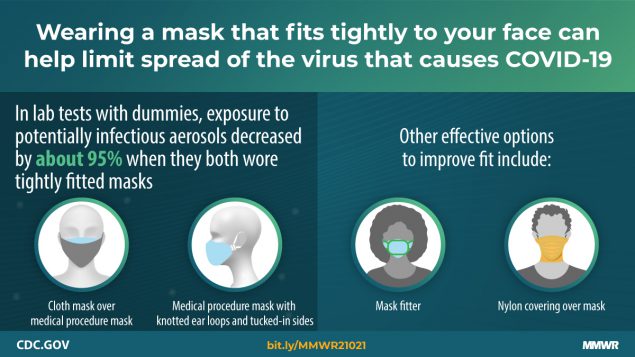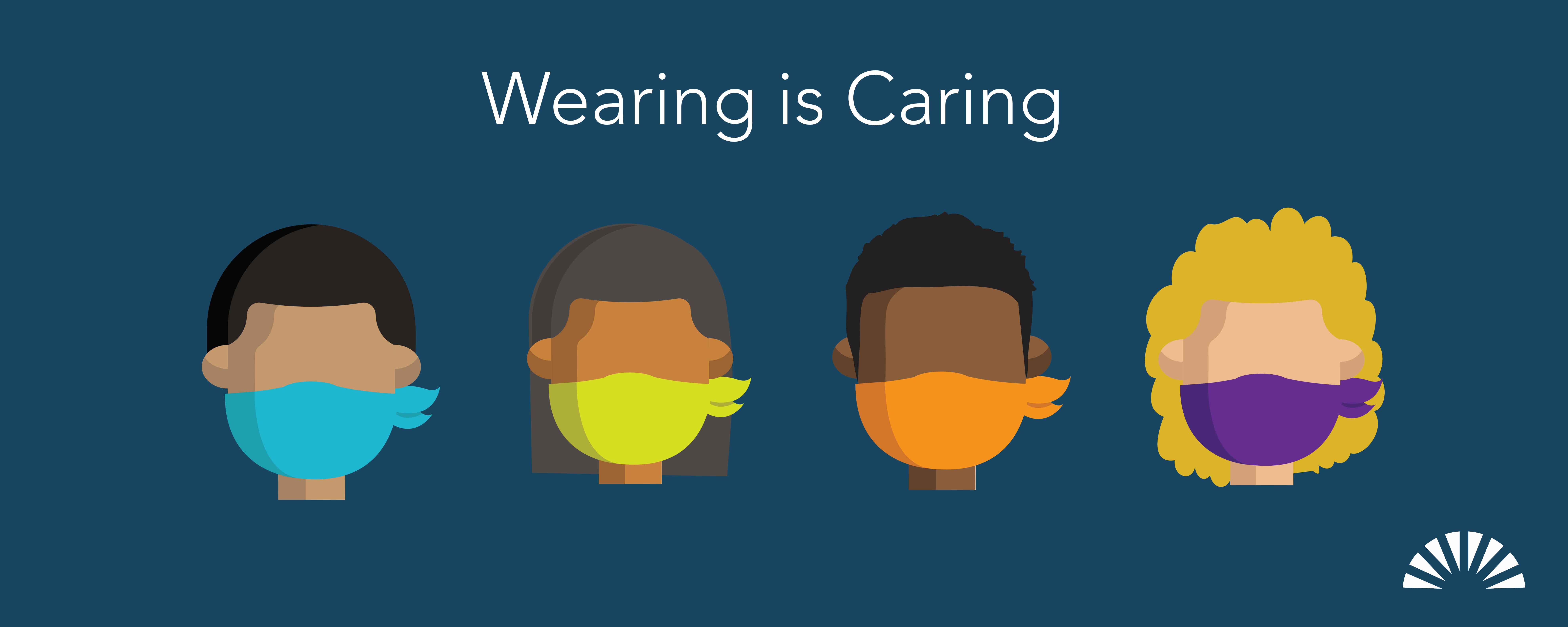Face Masks
Upgrade your mask: Good fit and filtration continue to be the best way to get the most out of your mask. The best masks for preventing COVID-19 include the N95, KN95 and KF94. If you don’t have access to one of these masks, wear a surgical mask or a surgical mask with a cloth mask on top. If you choose a fabric mask, opt for one with three of more cloth layers. No matter what kind of mask you wear, check the fit by avoiding gaps above the nose or on the sides.
> When You Need to Wear a Mask
Learn More About Upgraded Masks
Disposable Respirators
- N95 and KN95 respirators are designed to filter at least 95% of airborne particles (KF94s are designed to filter 94%). For some, these masks may take getting used to, as they fit more snugly and have more layers of material.
- They may not fit well if you have facial hair.
- To work well, respirators need to make a tight seal on your face. See NIOSH instructions for how to put on, take off and check the seal of a respirator.
- Check the seal each time you put one on.
- If you have breathing difficulties, check with your doctor before wearing a respirator.
- Do not wear a respirator with another mask
If choosing a KN95 respirator, use one that has been tested by NPPTL or offers filtration efficiency of 95% or higher.
Beware of counterfeit (fake) respirators as they may not be able to provide the promised protection.
Medical/Surgical Masks
- Medical grade face coverings (including surgical masks) are also called medical procedure, dental masks or disposable masks. Some surgical masks intended for medical use are regulated by the FDA.
- Use masks with a nose wire and at least three layers of non-woven material (melt-blown fabric and/or polypropylene).
- Medical masks should be resistant to fluids. Test your mask with a drop of water on the front. The water should not soak into the mask. It should form beads of water on the surface.
- Double masking with a medical mask UNDER a tight-fitting cloth mask will greatly increase filtration and reduce leakage.
- The fit can be improved simply by knotting the ear loops close to the edge of the mask and tucking the excess material. You can also use a mask brace, to reduce air leakage from the edges of the mask.
Find free masks (N95 respirators) at a participating location near you.
The Evidence for Face Masks:
Science Brief: Community Use of Masks to Control the Spread of SARS-CoV-2
Recent data indicates that covering your nose and mouth can slow the spread of COVID-19 because:
- Individuals can be contagious before the onset of symptoms. You may be contagious and not know it. If you have covered your nose and mouth, it can limit the spread of COVID-19.
- We touch our face less when our face is covered. Touching your face after touching something contaminated with COVID-19 increases your chances of getting sick with COVID-19.
- Journal of the American Medical Association (JAMA) editorial reviews latest science, while case study shows masks prevented COVID spread, July 14, 2020
- CDC reviewed the latest science and affirms that face masks are a critical tool in the fight against COVID-19 that could reduce the spread of the disease, particularly when used universally within communities. There is increasing evidence that face masks help prevent people who have COVID-19 from spreading the virus to others.
- CDC’s Scientific Brief: Community Use of Face Masks to Control the Spread of SARS-CoV-2, November 2020
- Wearing your face mask protects those around you, as well as yourself. Face masks provide source control and protection for the person who wears the face mask.
- CDC’s Maximizing Fit for Face Mask and Medical Procedure Masks to Improve Performance and Reduce SARS-CoV-2 Transmission and Exposure, February 2021
- The CDC conducted experiments to assess two ways of improving the fit of medical procedure masks: fitting a face mask over a medical procedure mask, and knotting the ear loops of a medical procedure mask and then tucking in and flattening the extra material close to the face. Each modification substantially improved source control and reduced wearer exposure.

- The CDC conducted experiments to assess two ways of improving the fit of medical procedure masks: fitting a face mask over a medical procedure mask, and knotting the ear loops of a medical procedure mask and then tucking in and flattening the extra material close to the face. Each modification substantially improved source control and reduced wearer exposure.
Videos on Face Masks:
- Learn best practices on making and wearing homemade face masks from Tessa Garner, BCHD's Parent Engagement Coordinator.
- Mia, a member of BCHD's Youth Advisory Council, shows the step-by-step process for making a homemade face mask that requires sewing and one that does not require sewing.
- Want to be a health leader? Take a note from BCHD’s Youth Advisory Council on tips on how to wear a face mask. Always be prepared and take it with you when you leave home. Wear it when you’re around others – it’s a sign of kindness and respect.
- A student from our BCHD Youth Advisory Council demonstrates how you can elevate your look with face masks while keeping yourself and others safe against COVID-19.
-
Two students from our BCHD Youth Advisory Council touch on the different face masks myth-busting questions that will help yourself and others safe against COVID-19.
Resources:
- Los Angeles County Department of Public Health: Masks
- Centers for Disease Control and Prevention (CDC):




